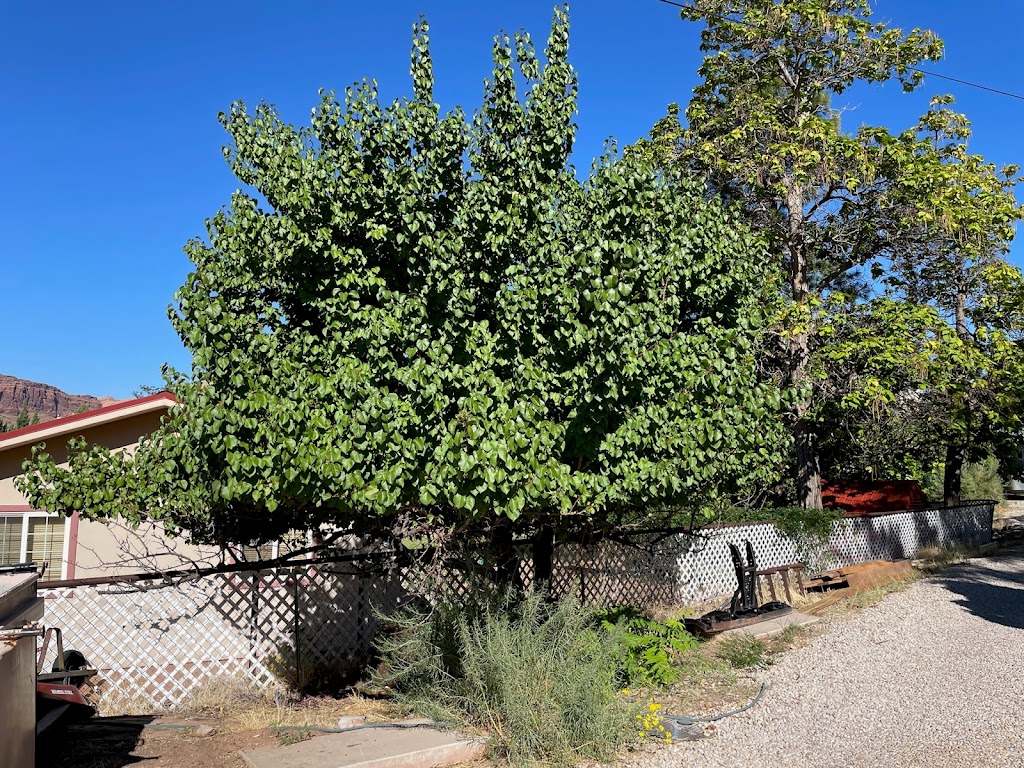Q. Now that it has gotten hot, my fruit trees (some new, some established) don’t look so good. When fruit trees are fist planted, if they are not planted right they will look a bit rough. Their looks will improve with time if these deficiencies are corrected. If their size (and increased water use) and soil improvement is accounted for when watering they will look better and better. A. When fruit trees are first planted, they may look good. That is because they are watered correctly for the first three or four years. After that fruit trees get bigger, and need more water applied wider and to the same depth. This means more water! Don’t change how often they are watered. When they are watered, they need to be watered to the same depth, to a wider area (which means more water) and with an increasing amount of water each time they are watered. This is because they are bigger, and water should be applied to a wider area. When fruit trees are first planted (when the weather is cooler) they need water every other day, improved soil and soil put in a flat and level moat around the tree to capture it. What I find to be effective is to apply water to the area under a mature fruit tree (seven years in the ground and longer) that is about six to seven feet wide. Much of the area watered depends on the soil you have but most soils are (even though they are hard when dry) a sandy loam when irrigated. I prune fruit trees (in the winter) at seven feet and let them grow during the year to close to 8 or 9 feet tall, not their full size. This pruning allows for ladder-less fruit harvesting. When the fruit tree is three or four years in the ground the tree is pruned to establish the major fruit bearing limbs To do this I water the fruit trees to about 18-24 inches deep in the soil. The area I want to apply water is about half the area under the fruit trees. This usually requires about 8 drip emitters (or two concentric rings of drip tubing with emitters placed 18 inches apart) when the fruit trees have been in the ground 5 to 6 years. The rings are spaced18 inches apart, too! The fruit trees are planted about ten feet apart in all directions. I prune them so they fit into this area, and you can walk around them to harvest, fertilize, and prune. Limbs are only removed at the bottom if they touch the ground. Otherwise picking fruit starts at the lowest limb!!!! Figs are good to have in the orchard because, in my experience, they grow but will not fruit if they come up short on water. Fruit is the first to go, not growth. If you have fruit on your fig trees in July and August, then the other trees are getting the right amount of water too. Figs are a “water indicator” fruit tree for me. Fig trees, as all fruit trees, are big solar collectors. If you cant reach the fruit it is wasted. If the fruit is too low it is wasted. If the fruit is too close together it is wasted.
